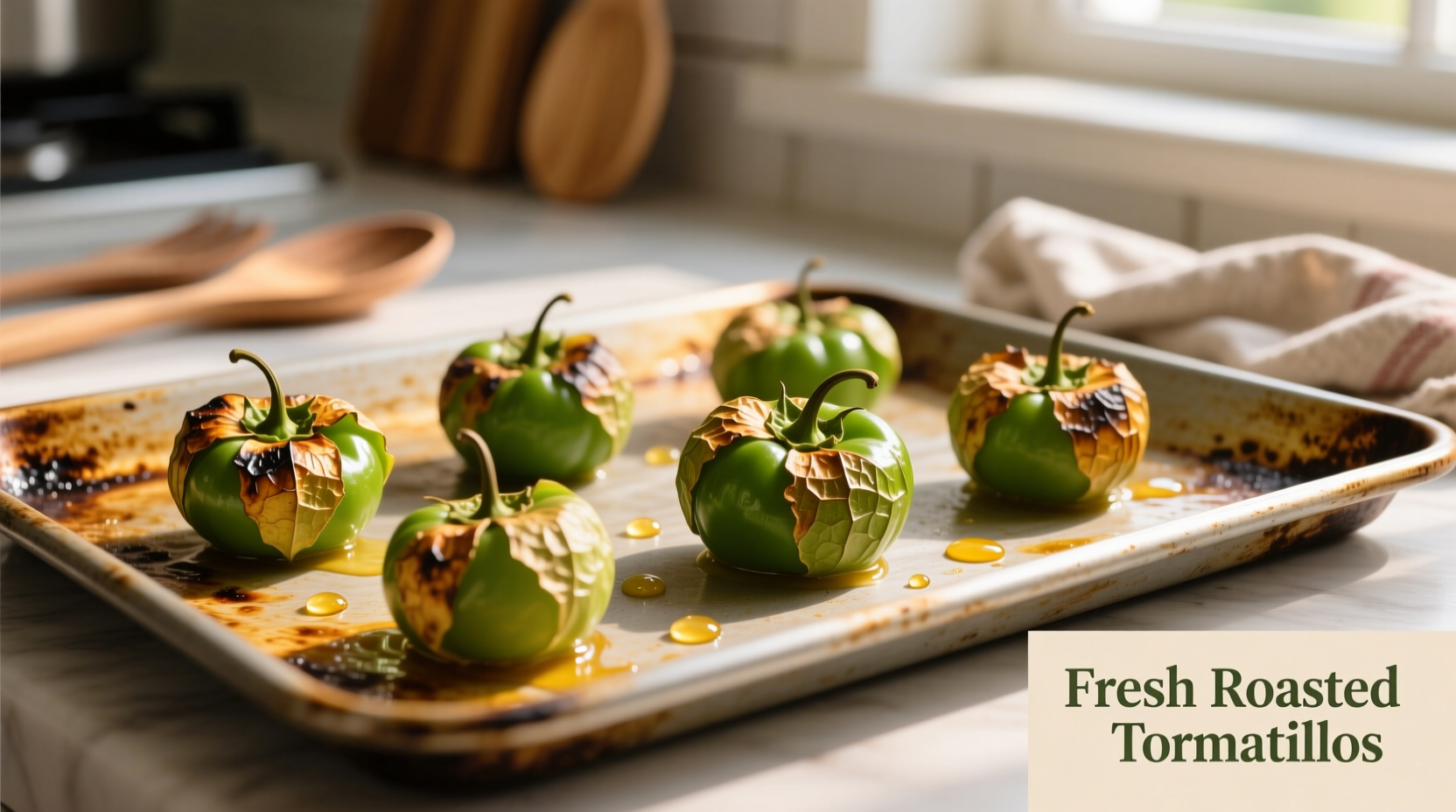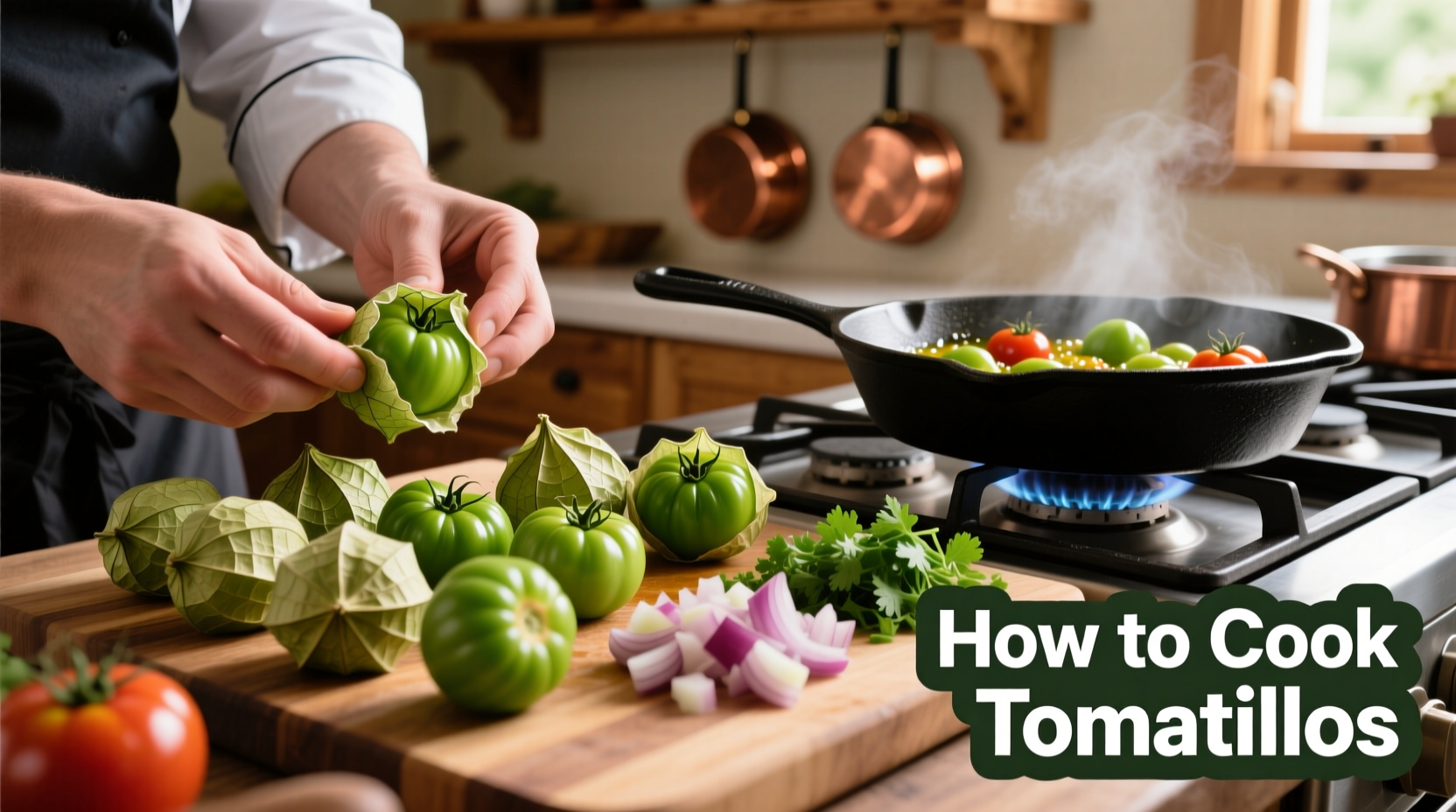Discover exactly how to cook tomatillos to unlock their vibrant flavor in your favorite dishes. Whether you're making authentic salsa verde or experimenting with new recipes, this guide delivers professional techniques tested in traditional Mexican kitchens. You'll learn not just how to cook tomatillos, but why certain methods work best for specific dishes—plus troubleshooting tips when things go wrong.
Understanding Tomatillos Before You Start Cooking
Tomatillos (Physalis philadelphica) aren't immature tomatoes—they're a distinct fruit native to Mexico with a tart, citrusy flavor. Unlike tomatoes, they're encased in a papery husk and must be husked before cooking. The USDA Agricultural Research Service confirms tomatillos contain significant vitamin C and dietary fiber, making them nutritionally valuable when properly prepared.
When selecting tomatillos, choose firm fruits that fill their husks completely. Avoid those with brown spots or mushy texture. The husk should be dry and papery, not green or moist. Ripe tomatillos range from pale green to purple depending on variety, but never red like tomatoes.
Essential Preparation Steps
Before cooking, proper preparation ensures optimal flavor and texture:
- Remove husks: Peel back the papery husk and discard it
- Rinse thoroughly: Wash under cold water to remove sticky residue
- Dry completely: Pat dry with paper towels for roasting or grilling
- Stem decision: Leave stems on for roasting to prevent bursting; remove for boiling
This preparation process, documented in traditional Mexican culinary practices, removes naturally occurring compounds that can cause bitterness if not properly addressed.
Step-by-Step Cooking Methods
Each cooking technique produces distinct flavor profiles. Choose based on your recipe's requirements:
Boiling Method (Best for Smooth Salsas)
Place husked, rinsed tomatillos in a saucepan and cover with cold water. Bring to a gentle boil and cook for 10-15 minutes until they change from bright green to olive green and soften slightly. Drain and cool before using. This method preserves their bright acidity while softening texture—ideal for traditional salsa verde.
Roasting Method (Best for Complex Flavor)
Preheat oven to 400°F (200°C). Place husked tomatillos on a baking sheet, leaving stems intact. Roast for 15-20 minutes, turning once, until skins blister and fruits soften. For deeper flavor, broil for final 2-3 minutes. The James Beard Foundation notes that roasting caramelizes natural sugars, creating richer, smokier notes perfect for moles and stews.
Stovetop Char Method (Quick Flavor Boost)
Heat a dry cast-iron skillet over medium-high. Add husked tomatillos and cook 8-12 minutes, turning occasionally, until evenly charred. This technique, common in Oaxacan cooking, adds subtle smokiness without oven heating—perfect for weeknight meals.
| Cooking Method | Time Required | Flavor Profile | Best Recipe Applications |
|---|---|---|---|
| Boiling | 10-15 minutes | Bright, tangy, fresh | Salsa verde, ceviche, light sauces |
| Roasting | 15-20 minutes | Deep, complex, slightly sweet | Moles, braises, hearty stews |
| Raw | None | Sharp, grassy, intensely tart | Fresh salsas, salads, quick sauces |
Troubleshooting Common Cooking Issues
Even experienced cooks encounter these tomatillo challenges:
- Bitterness after cooking: Usually caused by overcooking. Remove from heat when they turn olive green, not yellow.
- Watery texture: Common with boiling method. After cooking, drain thoroughly and press gently to remove excess liquid.
- Uneven cooking: Cut larger tomatillos in half for consistent results.
- Color fading: Add acid (lime juice) after cooking to preserve vibrant green color.
The University of California Agriculture and Natural Resources extension confirms that proper cooking time prevents the release of excess pectin, which causes undesirable sliminess in finished dishes.
When to Use Raw vs. Cooked Tomatillos
Understanding context boundaries helps you choose the right preparation:
- Use raw when you want bright, grassy notes and chunky texture (fresh pico de gallo, quick salsas)
- Use boiled when smooth texture and preserved acidity are essential (traditional salsa verde, light sauces)
- Use roasted when depth and complexity matter most (mole verde, braised meats, complex sauces)
Professional chefs like Rick Martinez, featured in Food & Wine, emphasize that cooking method directly impacts how tomatillos interact with other ingredients—roasted versions stand up to rich meats while boiled versions complement delicate seafood.

Storage Tips for Cooked Tomatillos
Maximize shelf life with these techniques:
- Refrigerate cooked tomatillos in airtight container for up to 5 days
- Freeze whole cooked tomatillos on baking sheet, then transfer to freezer bags for up to 6 months
- For sauces, freeze in ice cube trays then transfer to bags—perfect portion sizes for future recipes
- Never store cooked tomatillos with stems intact as they create moisture pockets that accelerate spoilage
The National Center for Home Food Preservation recommends acidifying tomatillo products (adding lime juice) before freezing to maintain color and prevent enzymatic browning during storage.
Transforming Your Dishes with Properly Cooked Tomatillos
Now that you've mastered cooking techniques, elevate your dishes with these professional tips:
- Add roasted tomatillos to scrambled eggs for vibrant color and tangy flavor
- Blend boiled tomatillos with avocado for creamy, nutrient-dense sauces
- Use charred tomatillos as base for vegetarian pozole
- Combine roasted tomatillos with chipotles for complex adobo sauce
Remember that properly cooked tomatillos shouldn't be overly sour—they develop balanced acidity that enhances rather than dominates your dish. As Maya Gonzalez notes from her field research in Mexican kitchens, "The magic happens when you stop fighting their tartness and start using it as a flavor catalyst."
Frequently Asked Questions
Do I need to remove the sticky residue from tomatillos?
Yes, the sticky coating contains withanolides that can cause bitterness. Rinsing under cold water while gently rubbing removes this residue effectively.
Can I eat tomatillos raw?
Absolutely. Raw tomatillos are safe to eat and commonly used in fresh salsas. They have a tart, citrusy flavor that mellow when cooked.
Why do my cooked tomatillos turn yellow?
Overcooking causes color change from green to yellow. Remove from heat when they turn olive green for optimal color and texture.
How do I prevent watery salsa?
After cooking, drain tomatillos thoroughly and press gently to remove excess liquid. Adding a small amount of cornstarch (1/2 tsp per cup) can also help thicken sauces.











 浙公网安备
33010002000092号
浙公网安备
33010002000092号 浙B2-20120091-4
浙B2-20120091-4